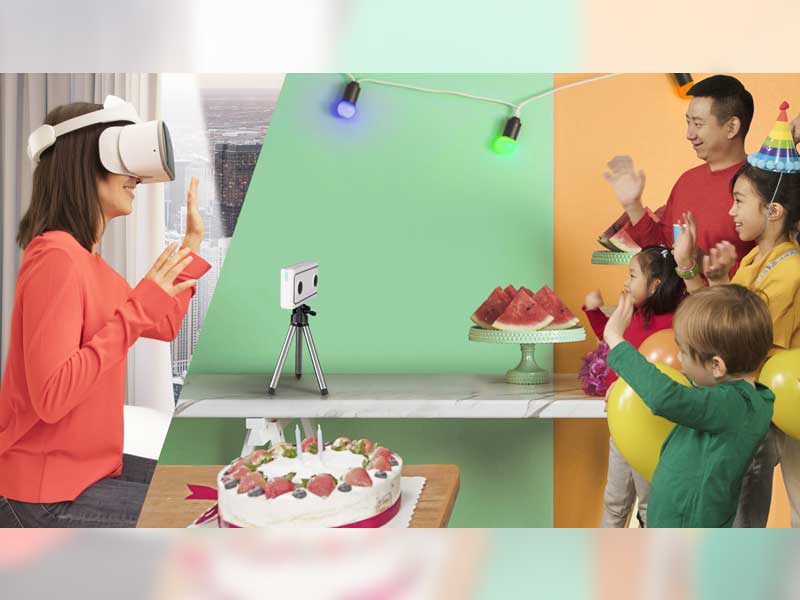 EMERGING TECH
EMERGING TECH
 EMERGING TECH
EMERGING TECH
 EMERGING TECH
EMERGING TECH
The Lenovo Mirage Camera for virtual reality 3-D video with Google Daydream support just showed up for preorder on Amazon.com’s U.S. store for just under $300.00.
This $299.99 camera is part of a suite of devices developed in collaboration with Google LLC using the VR180 format designed for 3-D video playback. The camera was announced by Lenovo Group Ltd. in January and is expected to hit the market on May 4 when the preorders will most likely ship to customers.
Unlike other VR cameras on the market, the Mirage does not offer a full 360-video experience. Instead, it uses two forward-facing cameras to allow for 180-degree video capture using a stereoscopic view in order to produce an increased degree of depth – similar to how the human eye perceives depth, with two eyes.
The camera can record in 4K resolution using 13-megapixel fisheye lenses in a compact device about the size of a very thick smartphone, and it comes with its own stand. The camera is also capable of motion and shake stabilization for handheld use and integrates with Google Photos and YouTube for ease of uploading videos and images. And it can livestream in VR.
The camera has no screen of its own, but can be connected to a smartphone through Wi-Fi. And there is a version of the camera which comes with its own X9 Long Term Evolution or LTE cellular modem.
The Mirage makes heavy use of VR180, a video format developed in collaboration between YouTube and Google’s Daydream VR team. Behind the scenes, VR180 cuts off half of the field of view – going from full-surround 360 degrees to 180 degrees – but uses this to greatly enhance what can be seen in the front arc. As mentioned above, it also allows for stereoscopic video that better matches human vision.
Since the release of this format, VR cameras began to sign on with support. This includes the Lenovo Mirage and the YI Horizon VR180 Camera from YI Technology. More cameras are expected to become certified for VR180 support this year.
The VR camera market is predicted to reach $10.8 billion by 2021, according to a report from Allied Market Research. Applications of these cameras extend from the entertainment industry — with professional cameras such as the Nokia OZO – and consumer aimed devices such as the Mirage, the LucidCam, released in 2017, and the Samsung Gear 360.
Video publishing social media has followed suit, making a space for content creators who want to record and publish 3-D video. Google and YouTube are being the VR180 format and YouTube added 3-D video support in 2015 and Facebook followed suit in 2017. Publishing platforms for VR content such as Zeality Inc. also launched in 2016.
Not all people need full 360-degree capability in a camera to capture an experience and viewers don’t necessarily need any more than a 180-degree view if they’re watching a static scene. The Lenovo Mirage and cameras that support the VR180 format will be betting on this possible segment of the VR watching audience.
With the stand and the forward-facing camera setup, the Mirage is being marketed in a similar way to a normal point-of-view handheld camera to “capture life’s special moments.” And, in that context, it fits into the gap between 2-D and full-on 360-degree cameras.
Support our mission to keep content open and free by engaging with theCUBE community. Join theCUBE’s Alumni Trust Network, where technology leaders connect, share intelligence and create opportunities.
Founded by tech visionaries John Furrier and Dave Vellante, SiliconANGLE Media has built a dynamic ecosystem of industry-leading digital media brands that reach 15+ million elite tech professionals. Our new proprietary theCUBE AI Video Cloud is breaking ground in audience interaction, leveraging theCUBEai.com neural network to help technology companies make data-driven decisions and stay at the forefront of industry conversations.